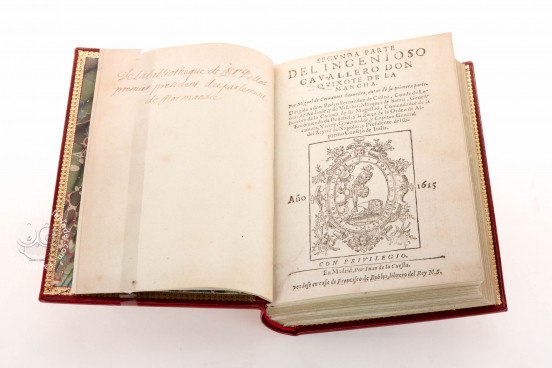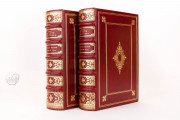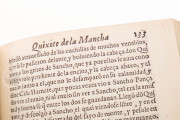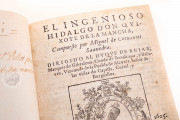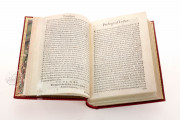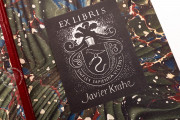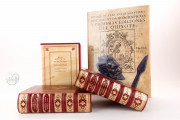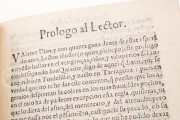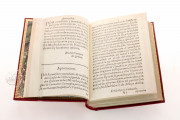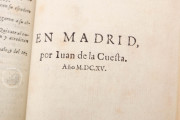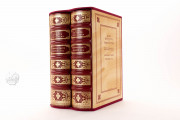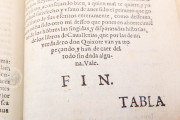The Toledo Don Quixote comprises both volumes of the first edition of the satirical adventure novel by Miguel de Cervantes Saavedra, considered the first modern work of fiction. El Ingenioso Hidalgo Don Quixote de la Mancha, a complete work at its publication, was published in Madrid in 1605 by Juan de la Cuesta. The sequel, Segunda Parte del Ingenioso Cavallero Don Quixote de la Mancha, was published by Cuesta ten years later. The text recounts the misadventures of the fictional Quixote, who aspires to revive the values of the knights of medieval chivalric romances.
No manuscripts of Don Quixote survive, making this editio princeps (first edition) of Cervantes's text an essential witness to the author's intentions. Nevertheless, both printings are riddled with errors, unquestionably resulting from a desire for fast publication.
Immediate Success
Cervantes's 1605 novel was soon extremely popular was reprinted often within a few years. Peopled by colorful characters involved in ridiculous situations, it was read for its entertainment value.
Claiming that its narrative was developed from archival material and an Arabic text, the book traces the misadventures of a middle-aged man outfitted in a medieval suit of armor. Delusional, the protagonist mistakes an inn for a castle, a stable for a chapel, windmills for giants, monks for enchanters, and a barber's basin for a helmet.
In the 1615 sequel, many of the characters themselves have read the original book and act accordingly. Furthermore, the author states that there are no more adventures to tell, a move intended to squash the sort of unauthorized spin-offs the original book engendered.
Stories within a Story
Authorial presence is a characteristic of the work, creating a story within a story. But there are further stories with the main story, which are recounted by minor characters in the narrative. These are plentiful in the original book and—despite the author's avowal to avoid them—in the sequel.
A Storied Ownership History
The pair of volumes now in the Biblioteca del Cigarral del Carmen collection has traveled together since their publication. Claude Pellot (1619-1683), the first president of the parliament of Normandy, owned both. They were in the collection of Henry Huth (1815-1878) when they were bound by Francis Bedford (1799-1883) in red morocco.
The books then passed into the possession of Huth's son, Alfred Henry Huth (1850-1910), before being purchased in the twentieth century by J. Pierpont Morgan (1837-1913), Haven O'More (born Richard Haven Moore, 1929- 2008) for The Garden Collection, and Javier Krahe (1944-2015). Krahe's extensive library forms the basis of the Biblioteca del Cigarral del Carmen.
We have 1 facsimile edition of the manuscript "Toledo Don Quixote": Don Quixote de la Mancha. First Edition facsimile edition, published by Millennium Liber, 2016
Request Info / Price
